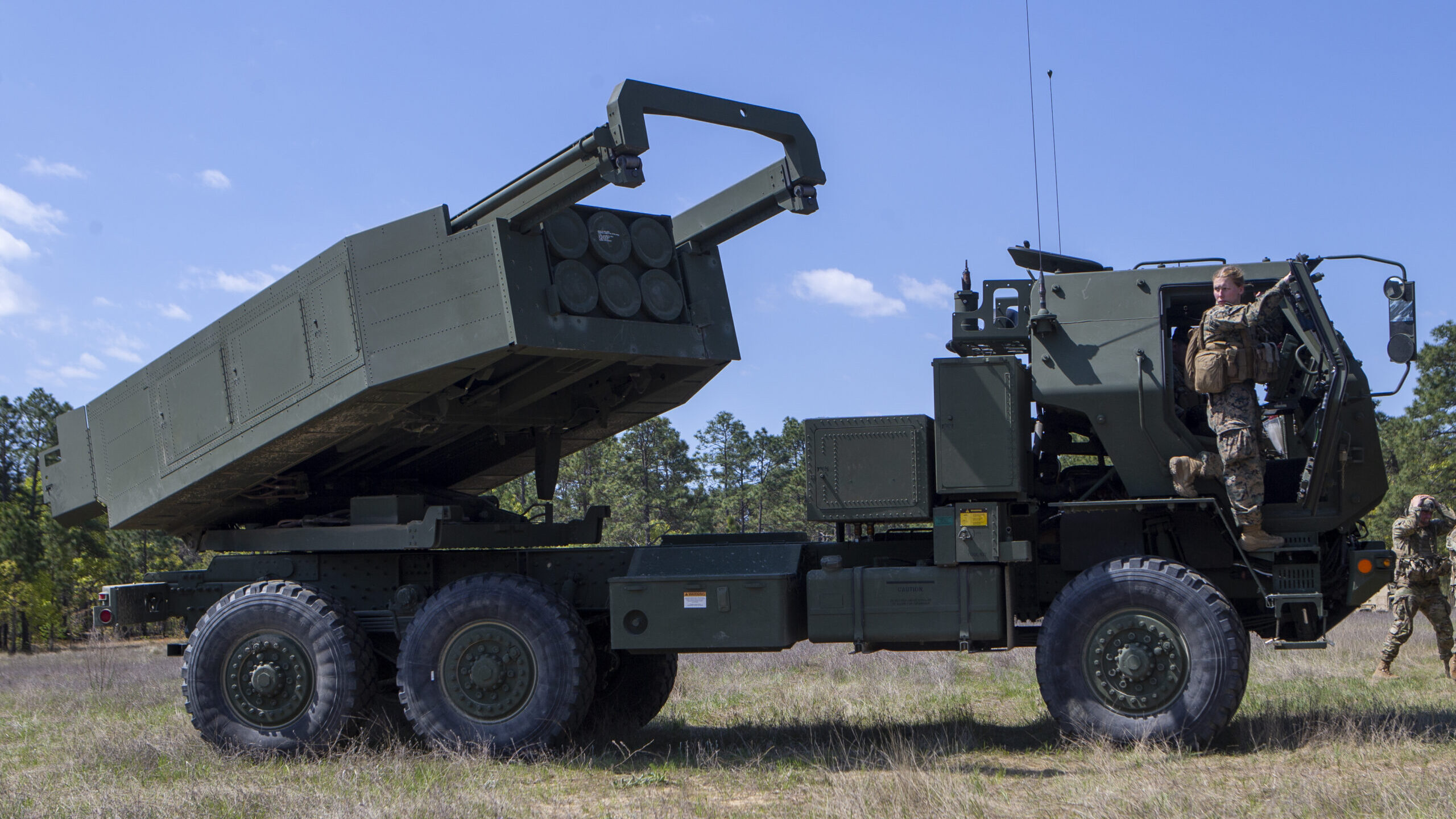
HIMARS are an advanced long-range and mobile rocket system that allow forces to employ precision fires onto a target. (U.S. Marine Corps photo by Pfc.Sarah Pysher)
WASHINGTON: National Security Advisor Jake Sullivan today suggested that the US and close allies would provide embattled Ukrainian forces with further systems capable of launching multiple rockets — to possibly include more of the sophisticated US High Mobility Artillery Rocket Systems, known as HIMARS.
The caveat, however, is that enough Ukrainian troops first must be trained to use them on the battlefield, he told the Center for a New American Security.
“It’s the Ukrainian’s job to ask for as many as they can possibly get their hands on,” he said, “and it’s our job to deliver to them to the extent that we feel there are trained personnel and the capacity to actually put those to use in an effective way. And so we have given an initial four, and actually we have moved the training at a really rapid and efficient pace so that those can be deployed onto the battlefield in short order.”
According to media reports, Ukraine has asked the Biden administration for somewhere between 60 and 100 more HIMARS following the delivery the four truck-mounted rocket launchers earlier this month. Sullivan, however, was coy about the specifics of both what Kyiv wants, as well as what exactly Washington might provide — saying only that there would be additional deliveries of long-range fire capabilities.
“In the next drawdown package from the United States, we anticipate that there will be further delivery of systems,” Sullivan said. “So we have to take it step by step, and one of the key considerations in how we deliver these systems is how many can be absorbed effectively onto the battlefield.
“These are highly sophisticated systems that require real training,” he elaborated. “We’ve trained an initial cadre of Ukrainians to be able to use them, but as you increase the number of systems, you obviously have to increase the number of personnel being prepared to use them. So that will be a process that unfolds over the course of the coming weeks and months.”
Sullivan elaborated that HIMARS was discussed during President Joe Biden’s conversation with Ukrainian President Volodymyr Zelenskyy yesterday — but he refrained from making any new promises.
“We think that over time, through close consultations with the Ukrainians at both the professional and the political level, we’ll come to a good understanding about how many of these HIMARS we end up giving,” he said. “President Biden spoke with President Zelenskyy yesterday at some length. They actually went through in detail the Ukrainian requests and the Western fulfillment of those requests on a number of systems: artillery, MLRS, armored personnel carriers, ammunition, etc. And we feel good about where we are.”
Sullivan noted the United Kingdom and Germany also have pledged to Multiple Rocket Launch Systems (MLRS) to Ukraine.
Indeed, the three countries on June 15 issued a joint statement to that end. Following the US HIMARS announcement on June 1, the UK on June 6 announced it would donate three M270 MLRS launchers with Guided MLRS (GMLRS) munitions. According to the joint statement, Germany intends to “transfer three M270 Mittleres Artillerie Raketen System (MARS) launchers and GMLRS ammunition from Bundeswehr stocks.”
The statement, however, very pointedly reiterates that these systems can strike targets “at approximately 70 kilometers” — a distance that is actually under the range of HIMARS depending on the type of rocket it fires, but which Washington set as a cap in its agreement with Ukraine.
Sullivan’s comments follow a joint press briefing on Wednesday by Defense Secretary Lloyd Austin and Joint Chiefs of Staff Chair Gen. Mark Milley at the conclusion of the Ukraine Defense Contact Group Meeting at NATO headquarters in Brussels, highlighting the importance of international support for Ukrainian long-range fires capabilities.
In particular, Austin noted the MLRS contributions of the UK and Germany; artillery from Canada, Poland and the Netherlands; and Mi-series helicopters and “urgently needed rocket ammunition” from Slovakia.
“These are key investments in Ukraine’s long-range fires capabilities, and they’ll be crucial to Ukraine’s efforts to repel Russia’s assault in the Donbas. I’m very thankful to these countries and to all of the countries that are helping Ukraine to defend itself, even as the war shifts and Ukraine’s most urgent needs continue to evolve,” he said.
As for Washington’s long-term game plan with Russia and Ukraine over the ongoing war, Sullivan reiterated the Biden administration’s ambiguous stance up to now.
“We have, in fact, refrained from laying out what we see as an end game, what we see as objectives,” he said. “So, we’ve been focused on what we can do — today, tomorrow, next week — to strengthen the Ukrainians’ hand to the maximum extent possible, first on the battlefield, and then ultimately, at the negotiating table. We think this will have to end through diplomacy. And we want the Ukrainians to be in the strongest position possible when that diplomacy gets engaged in a fuller way.”
Marines eye 2025 fielding of 3 new, mobile air defense systems
“We are on track from a programmatic standpoint — cost, schedule performance — but we’re always gonna be late to need,” said Col. Andrew Konicki, the program manager for Ground Based Air Defense (GBAD). “The threat is ever changing and ever evolving.”


























